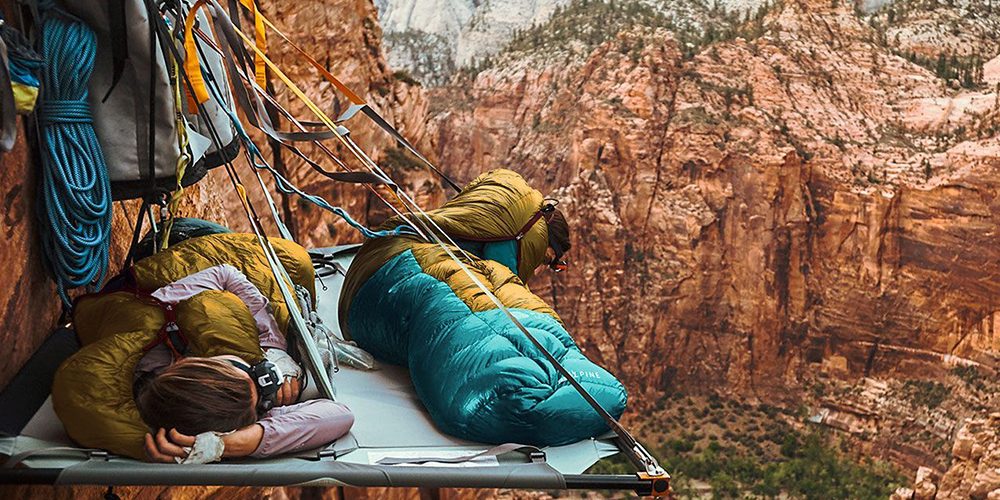Uncategorized
The Ultimate Guide to Selecting a Camping Sleeping Bag for Different Seasons
Choosing the right camping sleeping bag is one of the most important decisions you’ll make when preparing for an outdoor adventure. A good sleeping bag ensures you stay warm, comfortable, and well-rested, no matter the weather conditions. But with so many options available, it can be difficult to determine which sleeping bag is best for your specific needs.
In this ultimate guide, we’ll break down everything you need to know about selecting a camping sleeping bag for different seasons, from the materials to look for, temperature ratings, and tips for staying comfortable on your next camping trip.
Why Choosing the Right Sleeping Bag Matters
Your sleeping bag plays a crucial role in regulating your body temperature during the night, ensuring you get a restful sleep, no matter how cold or hot the conditions outside may be. The wrong sleeping bag can result in discomfort, heat loss, or overheating, which can affect your performance the next day. It’s essential to match your sleeping bag to the seasonal conditions and the temperatures you’ll be facing during your camping trip.
1. Understanding Sleeping Bag Temperature Ratings
One of the most important factors to consider when choosing a camping sleeping bag is its temperature rating. Sleeping bags are typically rated to indicate the lowest temperature at which they will keep you comfortable. These ratings are based on standardized testing, but keep in mind that individual factors like your metabolism, clothing, and sleeping pad will also affect how warm you feel.
Here are the most common temperature ranges and when to use them:
- Summer Sleeping Bags (40°F to 60°F / 4°C to 15°C): These bags are designed for warmer weather and will keep you comfortable in temperatures above 40°F (4°C). Ideal for summer camping, backpacking trips, or warmer climates.
- 3-Season Sleeping Bags (20°F to 32°F / -6°C to 0°C): The most versatile choice for most campers. These bags are suitable for spring, summer, and fall camping, as they offer warmth in cooler conditions while remaining breathable enough for warmer nights.
- Winter Sleeping Bags (0°F to 20°F / -18°C to -6°C): Made for winter camping, these bags are highly insulated to protect against freezing temperatures. They are designed to retain heat even in extreme cold and are perfect for mountainous or high-altitude environments.
- Extreme Cold Sleeping Bags (-20°F / -29°C and below): These bags are used in extreme winter conditions, where temperatures can drop far below freezing. If you’re camping in places like the Arctic or Antarctica, these bags are your best bet.

2. Choosing the Right Sleeping Bag for Each Season
Now that you understand temperature ratings, let’s explore which sleeping bag is best suited for each season:
Summer Sleeping Bags
Summer sleeping bags are designed to keep you cool while still providing a layer of warmth during cooler nights. These bags tend to be lightweight and breathable, making them ideal for warm weather camping.
- Material: Summer bags are often made from lightweight synthetic or down insulation. While down offers superior warmth-to-weight ratios, synthetic insulation is more affordable and dries faster if it gets wet.
- Key Features: Look for sleeping bags with mesh linings and ventilation zippers that allow for increased airflow. Shortened lengths can also help reduce weight.
- Best for: Warm, dry weather; summer backpacking; or camping in regions with mild nights.
3-Season Sleeping Bags
The 3-season sleeping bag is the most versatile option, designed to handle the fluctuating temperatures that can occur during the spring, summer, and fall. Whether you’re camping in the mountains or along a river, a 3-season sleeping bag will keep you comfortable in moderate conditions.
- Material: These bags usually feature synthetic or down insulation, depending on whether you prioritize warmth, weight, or water resistance.
- Key Features: 3-season bags often have a full-length zipper, draft collars, and adjustable hoods to trap warmth and increase versatility.
- Best for: Spring and fall camping, moderate altitudes, and environments where temperatures dip low at night but are not extreme.
Winter Sleeping Bags
If you’re planning to camp in cold weather or in high-altitude environments, a winter sleeping bag is essential to keep you warm and safe.
- Material: Insulation is crucial for winter bags. Down insulation is great for providing warmth in sub-zero temperatures, but it can lose its insulating properties if it gets wet. Synthetic insulation is water-resistant and maintains its warmth even when damp.
- Key Features: Winter sleeping bags are equipped with extra insulation, draft tubes, adjustable hoods, and weather-resistant shells to protect against the cold. A foot box that traps heat is also common.
- Best for: Winter camping, snow, and sub-zero temperatures. Perfect for mountain expeditions or cold weather backpacking.
Extreme Cold Sleeping Bags
For extreme cold weather or expedition-style camping in temperatures far below freezing, extreme cold sleeping bags are essential. These bags are designed for polar expeditions or camping in the most frigid conditions.
- Material: These sleeping bags are usually filled with high-quality down or premium synthetic materials to offer maximum insulation.
- Key Features: Extreme cold bags feature double zippers, draft collars, oversized hoods, and often a multi-layer system for added warmth. They may even include internal liners for additional insulation.
- Best for: Arctic expeditions, mountain summits, or any camping experience in extreme cold.
3. Other Factors to Consider When Choosing a Sleeping Bag
Besides the temperature rating, there are other important factors to consider when selecting your sleeping bag:
- Insulation Type:
- Down insulation is lightweight, compressible, and highly effective at trapping heat, but it loses insulating properties when wet.
- Synthetic insulation is heavier, less compressible, but works better when wet and dries faster.
- Sleeping Bag Shape:
- Mummy bags offer the best warmth-to-weight ratio, with a snug fit around the body to minimize heat loss.
- Rectangular bags provide more space to move around but are less efficient in retaining warmth.
- Semi-rectangular bags offer a balance of warmth and comfort.
- Weight and Packability:
If you’re hiking or backpacking, consider how lightweight and packable your sleeping bag is. Look for bags that compress down into small sizes for easy packing and carrying. - Length and Fit:
Choose a sleeping bag that fits your body size. Sleeping bags come in various lengths (regular, long, and extra long), so make sure you select one that accommodates your height for maximum warmth. - Additional Features:
Look for extra features like internal pockets, compression sacks, and draft tubes that prevent heat loss.
Conclusion
Selecting the right camping sleeping bag for different seasons is key to staying comfortable and safe during your outdoor adventures. By understanding the temperature ratings, materials, and features of various sleeping bags, you can ensure you’re well-prepared for any camping trip, whether it’s in the summer heat or the chill of winter. With the perfect sleeping bag, you’ll sleep soundly, wake up refreshed, and be ready to enjoy the great outdoors no matter the season!

